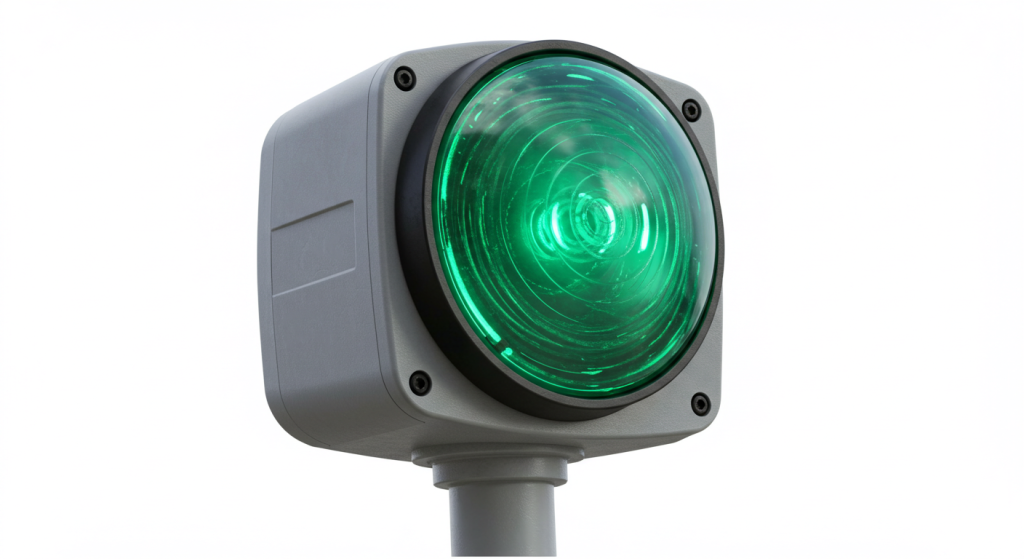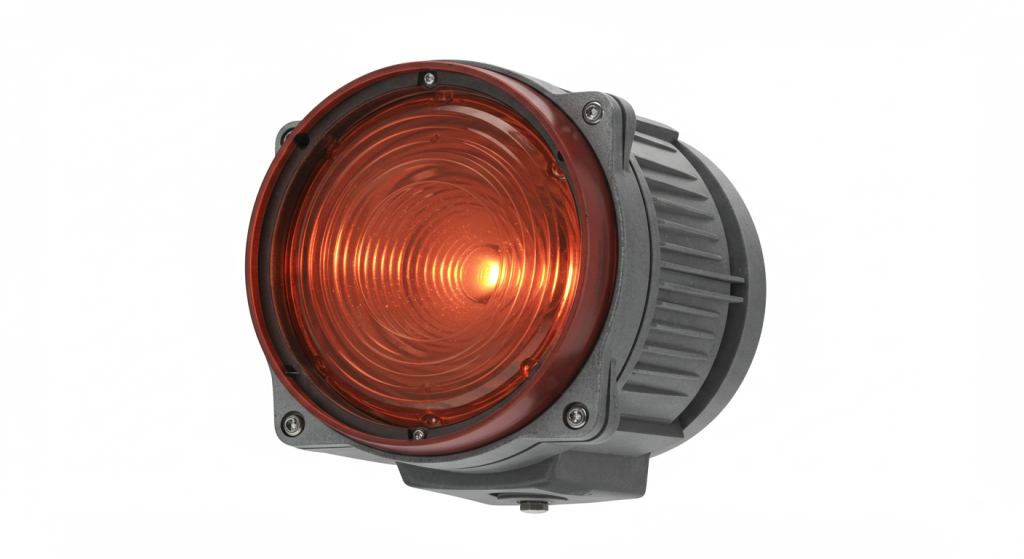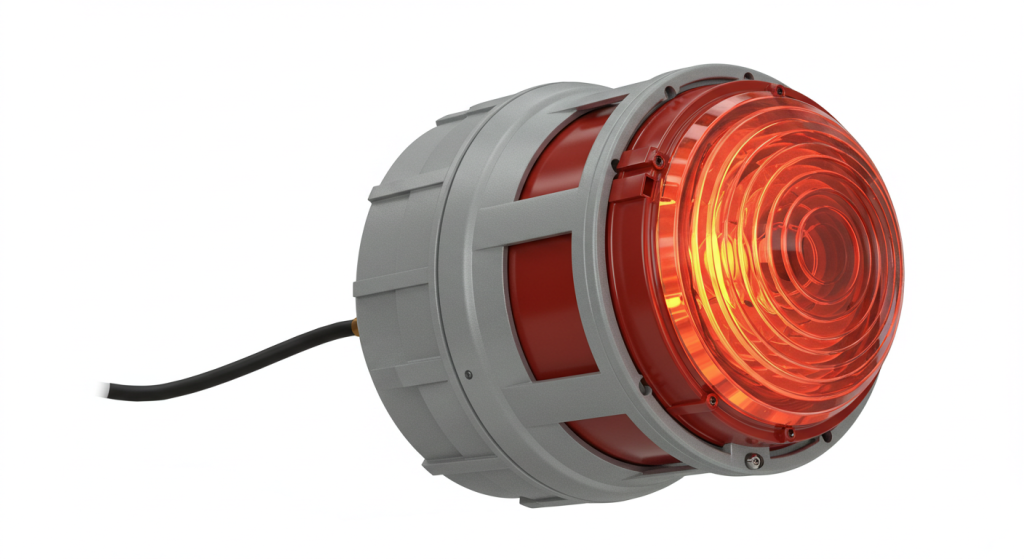What is runway lighting systems? This seemingly simple question opens up a complex world of safety, technology, and aviation regulation. Runway lighting systems are a crucial component of airport infrastructure, designed to guide pilots safely during takeoff and landing, especially during nighttime and low-visibility conditions. From the simplest edge lights to the most advanced approach lighting configurations, these systems play an essential role in ensuring safe flight operations. Understanding the different types of lighting, their spacing, colors, and purposes is essential for anyone involved in aviation. How to Find the Signal Light That’s Right for You also requires a deep understanding of the system itself.

The Foundation of Safe Airfield Operations
Before we delve into the intricacies of runway lighting, it’s important to appreciate the fundamental role these systems play in aviation safety. Runway lights provide critical visual cues to pilots, enabling them to align their aircraft with the runway, maintain proper altitude, and make safe landings or takeoffs. These visual aids are especially important during periods of reduced visibility, such as nighttime, fog, or heavy rain. The meticulous design and placement of each light, combined with its unique color coding, creates a comprehensive guidance system that helps ensure the safety of all flight operations. The importance of this cannot be overstated and is the reason why many airports place considerable effort in maintenance of these systems.
Which is the best solar runway lights?
As the world becomes more aware of sustainability, the question of Which is the best solar runway lights? becomes increasingly relevant. Solar-powered runway lights offer a green alternative to traditional electrical systems, providing the same essential visual cues without relying on grid power. These systems typically include solar panels, batteries, and LED lights. While they provide a sustainable solution, it is important to consider factors such as the amount of sunlight available, battery life, and the intensity of light output. When choosing solar runway lights, it is imperative to consider the quality of the components, the weather conditions they are rated for, and the overall system’s reliability. There are some solar powered runway lights that are better than others, and this is a detail that needs to be investigated in depth before making a final decision.

What is the runway lighting?
What is the runway lighting? The basic runway lighting system comprises several types of lights, each serving a specific purpose. The most common are runway edge lights, which define the lateral boundaries of the runway. These lights are typically white, changing to yellow in the last 2,000 feet (600 meters) of the runway to alert pilots they are approaching the end of the runway. Other crucial elements include runway threshold lights, which mark the beginning of the usable portion of the runway; runway centerline lights, which are mostly used on runways where visibility is sometimes poor; and touchdown zone lights, which show the designated area for landing. Each of these components works in coordination to provide clear and consistent visual references to pilots, enabling them to conduct a safe approach and landing. This basic approach to runway lighting is a major piece of what allows air traffic control to operate effectively.
Runway Edge Lights
Runway edge lights, as mentioned previously, are among the most fundamental components of a runway lighting system. They are positioned along the edges of the runway and define its lateral boundaries, and they’re typically spaced at regular intervals. The color of the runway edge lights is usually white. However, as an aircraft approaches the end of a runway, the final 2,000 feet (600 meters) of edge lights will change to yellow, signaling to pilots that the runway is coming to an end. This color change is a vital safety feature that helps prevent runway overruns. The reliable and consistent presence of edge lights also makes them essential for navigation under low visibility conditions. These lights are crucial in helping pilots maintain their alignment with the runway during takeoff and landing.
What is a runway status light system?
What is a runway status light system? A runway status light system is an advanced technology designed to enhance safety by alerting pilots and vehicles to potentially unsafe situations on the runway. This system typically incorporates red lights embedded in the runway surface or displayed through runway edge lighting, which illuminate to indicate a vehicle or aircraft is occupying a runway or taxiway that should not be entered. These lights act as a direct and unambiguous warning, reducing the risk of runway incursions and collisions. Runway status lights are a critical part of newer airport safety systems and have been adopted at many major airports around the world. They work in tandem with other safety measures such as surface radar and air traffic control to ensure the safe operations of an airport.
Runway Centerline Lights
Runway centerline lights are another key part of runway lighting, often used on precision approach runways. They are embedded in the runway surface along the centerline and provide essential guidance, particularly in low-visibility situations. The lights are typically white, but they alternate with red lights within the last 3,000 feet (900 meters) of the runway, and they then become entirely red in the final 1,000 feet (300 meters). This transition to red provides an explicit warning that the end of the runway is imminent. Runway centerline lights are invaluable for pilots maintaining alignment on the runway, especially during periods of inclement weather or at night, and in conjunction with other lights, they provide a safe and effective lighting system.
Touchdown Zone Lights
Touchdown Zone Lights (TDZL) are additional runway lights that help the pilots during the landing. They are located near the beginning of the runway, after the threshold, to help pilots identify the touchdown zone. These lights usually consist of rows of white lights placed on either side of the runway centerline. The lights help pilots in establishing the correct position and altitude for landing. These lights work as an important element in the overall airport lighting system and improve landing safety, especially in bad weather or low light conditions. This is a core component of What is runway lighting systems?.

What are the requirements for runway lights?
What are the requirements for runway lights? The requirements for runway lights are strictly regulated to ensure they meet specific safety and performance standards. The regulations, which are usually overseen by a nation’s aviation authorities, define the spacing, color, intensity, and placement of all lights used on runways, taxiways, and approach areas. These regulations are put in place to provide uniform visual guidance to pilots worldwide, so that no matter where a pilot is landing, the lighting systems will be familiar and reliable. These standards also mandate that all lights must have specific levels of brightness and color accuracy, which helps to ensure that they remain visible under different atmospheric conditions. Regular testing and maintenance of all lights is also required to ensure that they comply with all set standards. This dedication to standards for runway lighting shows the importance that regulatory authorities place on it.
Runway Edge Lights Color
Understanding the significance of runway edge light color is critical. As mentioned earlier, the color of runway edge lights is predominantly white, providing a clear and uniform boundary to the runway. However, the change to yellow in the last 2,000 feet of the runway serves as a critical warning, alerting pilots that the end of the runway is near. This yellow indication allows the pilots to better anticipate the termination point and prepare for a potential missed approach or go around. In some airports, particularly those with reduced runway length, the yellow lights may start at 3,000 feet instead of 2,000 feet to allow for a more gradual slowing down by the aircraft. The consistent color-coding system is a safety mechanism that relies on the uniformity of colors.
Runway Lighting Diagram
A Runway lighting diagram is used to provide a visual representation of how a runway lighting system is configured. These diagrams will show the locations of runway edge lights, threshold lights, centerline lights, and approach lighting systems. These diagrams also often include information about the color coding used at the airport, which is particularly important for pilots during periods of reduced visibility. A runway lighting diagram is an important reference tool for pilots and for airport operations. They may be used for pre-flight planning, and also to assist maintenance crews who need to perform repairs on the lighting system. The information displayed in the diagrams will often include spacing information, light intensities and specific characteristics of the lights being used on the runway.
What is runway lead in lighting system?
What is runway lead in lighting system? Runway lead-in lighting systems, more commonly known as approach lighting systems (ALS), are used to provide visual guidance to pilots when they are approaching the runway, particularly in conditions of low visibility. These systems usually extend out from the runway threshold and guide pilots as they move from the initial approach to landing. They can take various forms, ranging from basic systems of light bars, to more advanced and comprehensive systems. The design and configuration of an approach lighting system is based on the type of runway and the level of precision approach that it supports. The goal of all these systems is to allow pilots a clear and unmistakable visual aid to align themselves correctly for a smooth landing. Approach lighting systems play a crucial role in overall airport safety and the efficiency of landing procedures. This also relates directly to How to Find the Signal Light That’s Right for You.
Approach Lighting System
The Approach lighting system (ALS) is a vital component of an airport’s visual aids. There are various configurations of approach lighting systems, from simple systems that consist of a series of light bars, to more advanced systems that use a variety of different lighting patterns and sequences. The goal of all of these is to provide reliable guidance to pilots during their approach to the runway, helping them make the transition from instrument-based approaches to a visual landing. Some types of approach lighting systems include high-intensity strobe lights and sequential lights that help draw the attention of pilots. The choice of ALS depends on the airport’s characteristics, the terrain surrounding the airport, and weather conditions in the area. The ALS works in coordination with the runway lighting system to provide consistent guidance from the approach to the runway. This overall system is of great importance in helping to make a safe and reliable landing.
Runway Lighting System
The term “Runway Lighting System” encompasses all of the visual aids present on a runway and its approach areas. This integrated system works as a complete solution for visual guidance, starting from the initial approach phase and leading to the landing or takeoff roll. A well-designed runway lighting system includes edge lights, threshold lights, centerline lights, touchdown zone lights, approach lights, and, at some airports, runway status lights. All components are integrated into a unified structure to provide consistent and reliable guidance to pilots at all times of the day and night, and in diverse weather conditions. Each component is also designed and maintained to meet strict regulations for its safety and performance standards. This level of dedication to quality in the various systems of lights showcases the importance of a quality runway lighting system.
Airport Lighting
Airport Lighting extends far beyond just the runway; it also encompasses all the visual aids around the airport. This includes the taxiway lighting, which helps pilots navigate aircraft on the taxiways; apron lighting, which helps in the efficient movement of aircraft on the aprons; and beacon lights, which help pilots locate an airport at night. All these different types of lighting are designed to provide a clear and safe environment for aircraft movement on the ground and in the air. The coordinated design and function of all of these lights create a safe and effective system for pilots and ground personnel to safely operate the airport. With this integrated system, the movement of aircraft is as safe as it can be given the complexity of airport operations.
Runway Lights
The collective term Runway lights references all the lights that are utilized as part of an integrated system for the runway and approach areas. This includes a variety of light types with specific functions, from basic edge lights to complex approach lighting systems and touchdown zone lights. Runway lights are the visual cues for pilots that allow them to maintain their position and alignment with the runway, from the initial approach to their landing and rollout. All of these different lights work together to create a comprehensive guidance system for pilots. By having a good understanding of each type of light and its function, a pilot will be able to better understand their role in ensuring a safe and successful landing. The diversity and complexity of the light system shows why maintaining and updating these systems is a high priority for all airports.
The Importance of Proper Lighting Maintenance
Beyond the design and placement of runway lights, the maintenance of these lights is of critical importance. Regular inspections and maintenance are crucial to ensure that all lights are functioning correctly and meet the required levels of intensity and color accuracy. Failed lights can compromise the integrity of the lighting system, especially in low-visibility situations and they need to be repaired immediately. Airport maintenance personnel are usually responsible for conducting regular checks of the runway lighting system, and they are tasked with identifying any broken lights and correcting the issues. The routine checks help to make sure that the lighting system is operating optimally at all times. This consistent quality control also reflects how important a well functioning runway lighting system is to ensuring safe and efficient flight operations.
How to Find the Signal Light That’s Right for You
The question of How to Find the Signal Light That’s Right for You is not just limited to airport operators or aviation technicians, but also to pilots. Pilots must be able to properly interpret the signals that are given by various lighting systems. Understanding the purpose and color code of each light allows pilots to better navigate during takeoff and landing, and especially in low visibility conditions. The knowledge of these lighting systems also allows pilots to make better and more informed decisions in cases of abnormal circumstances or malfunctions. As a pilot, understanding how runway lights work is an important part of ensuring your safety and the safety of your passengers and crew. This knowledge, however, is also important for any person involved in aviation, from technicians to air traffic controllers.
The Future of Runway Lighting
The future of runway lighting is heading towards more sophisticated and efficient solutions. LEDs are becoming more widely used because of their energy efficiency and longevity, and technology is pushing towards intelligent systems that can adapt lighting intensity and color based on real-time conditions. The goal is to provide pilots with the clearest visual cues possible, regardless of the weather or the time of day. The ongoing advancement in lighting technology is focused on improving safety and efficiency in airport operations, and will likely lead to more seamless landings in the years to come. The continuous push for improvement is a reflection of how important runway lighting systems are and how much investment is placed on constantly improving their capabilities and efficiency.
Challenges and Considerations
While runway lighting systems are constantly advancing, several challenges and considerations must be taken into account. These systems require a substantial initial investment, and regular maintenance is essential to ensure proper functioning. The lighting system must be consistent with regulatory requirements, and changes and upgrades must adhere to all guidelines set by local aviation authorities. There are also challenges in the operation of these systems, as weather conditions and other external factors may affect light visibility. Overcoming these challenges will require ongoing research, development and a continuous dedication to maintaining the systems. The investment in these systems is worthwhile and essential, as they are critical to the overall safety and success of flight operations around the world. When considering this information, **How to Find the Signal Light That’s Right for You** will rely on a deeper understanding of the technologies and the challenges that go with it.
Conclusion
In conclusion, What is runway lighting systems? is a question that encompasses a complex system designed to ensure the safe and efficient operation of aircraft. These systems include a diverse set of lighting components, each with a specific purpose and design. The use of different colors, spacing, and intensity levels provide important visual references to pilots, helping them make better and more informed decisions during takeoff and landing. The continued advancement and improvement of these systems shows their importance in maintaining the level of safety that modern air travel requires. This also shows the critical role that all parts of the system play, from the basic edge light to complex approach lighting. Finally, understanding of all elements of the system also ties directly to the need for knowing How to Find the Signal Light That’s Right for You so that all the components can work in the best way to ensure a safe landing.
The understanding of a runway lighting system is important for all those involved in aviation, and hopefully this article is a useful tool in understanding the complexity of this critical system. This is an integral part of safety, and a necessary component for the world’s air travel to operate effectively.